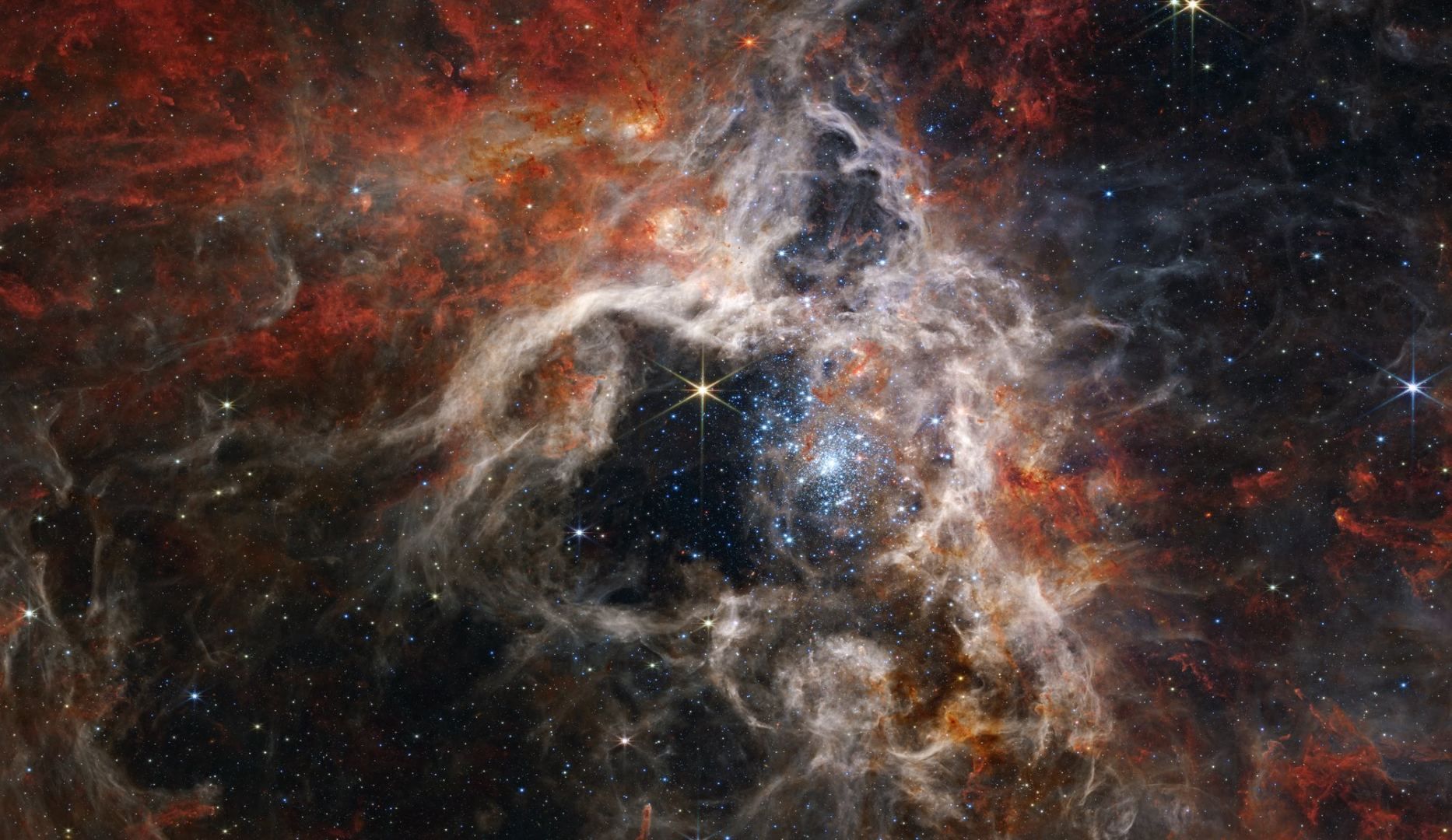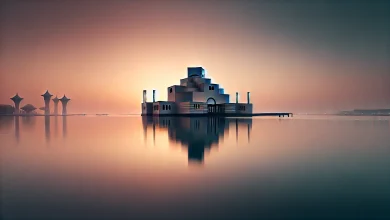NASA’s Webb Telescope Captures Image of Tarantula Nebula
التلسكوب جيمس ويب يلتقط صورا مميزة لسديم الرتيلاء
QNA
Washington: NASA’s James Webb Space Telescope captured thousands of never-before-seen young stars in a spider-shaped stellar nursery known as the Tarantula Nebula.
The cosmic nursery is officially called 30 Doradus and is located 161,000 light-years away in the Large Megallanic Cloud galaxy, which happens to be the biggest and brightest star-forming region in the Local Group – the galaxies closest to our Milky Way.
The Tarantula Nebula gets its name from its dusty filaments. The largest and brightest star-forming region near our galaxy, it’s home to the hottest, most massive stars known, the space agency said.
This nebula gives us information about what star formation might have looked like at its peak in our cosmic history.
Viewed with Webbs Near-Infrared Camera (NIRCam), the region resembles a burrowing tarantulas home, lined with its silk. The nebulas cavity centered in the NIRCam image appears to be hollowed out by blistering radiation from a cluster of massive young stars, which sparkle pale blue in the image.
The Tarantula Nebula has been fascinating astronomers for years because it has a similar type of chemical composition as the huge star-forming regions seen in the universe’s so-called ‘cosmic noon’ – meaning when the cosmos was only a few billion years old and such star formation was at a peak.
Star-forming regions in the Milky Way don’t have the same chemical composition and are not producing at that same super-fast rate as the Tarantula Nebula.
The Webb telescope’s Near-Infrared Camera, also called NIRCam, has helped researchers see the region “in a new light, including tens of thousands of never-before-seen young stars that were previously shrouded in cosmic dust,” according to NASA.
The Webb telescope’s Near-Infrared Spectrograph (NIRSpec) caught a very young star doing that, which changed astronomers’ previous beliefs about that star.
“Astronomers previously thought this star might be a bit older and already in the process of clearing out a bubble around itself,” according to NASA. “However, NIRSpec showed that the star was only just beginning to emerge from its pillar and still maintained an insulating cloud of dust around itself.
قنا
واشنطن: ذكرت إدارة الطيران والفضاء الأمريكية /ناسا/، أن التلسكوب الفضائي /جيمس ويب/ تمكن من التقاط صور مذهلة ومميزة لسديم /الرتيلاء/، تقع على بعد 161 ألف سنة ضوئية من الأرض.
وأشارت /ناسا/ في بيان لها إلى أن سديم /الرتيلاء/ تم تسميته بهذا الاسم نسبة إلى شكل سحب الغاز والغبار فيه، ويعد الأكبر والأكثر لمعانا وتوهجا في منطقة تكون فيها النجوم نشطة للغاية وتتشكل بوتيرة محمومة في سحابة ماجلان الكبيرة داخل مناطق تكون النجوم في المجرات الأقرب لدرب التبانة، وهي المجرات القريبة من المجرة التي يقع كوكب الأرض ضمنها.
وركز علماء الفلك على هذا السديم لدراسة التركيب الكيميائي المختلف له، حيث أنه مشابه لمناطق تشكل النجوم العملاقة التي لوحظت في (الظهيرة الكونية) للكون، عندما كان عمر الكون بضعة مليارات من السنين، وهي المرحلة التي شهدت أكبر قدر من تكون النجوم، بالإضافة إلى أن أحد الأسباب التي تجعل سديم /الرتيلاء/ محط الاهتمام أن تشكل النجوم داخل مجرة درب التبانة القريبة للأرض، لا يمكنها إنتاج نجوم كالرتيلاء الأكثر نشاطا وسخونة.
وأوضحت /ناسا/ أن الأدوات العلمية الدقيقة والكاميرا التي تعمل بالأشعة تحت الحمراء والتي قام باستخدامها التلسكوب لالتقاط صور السديم بأطوال موجية مختلفة ساعدت الخبراء على رؤية كافة جوانب المنطقة بضوء جديد ووضوح أكثر، ومنها ظهور آلاف النجوم الشابة الجديدة التي لم تكن ظاهرة من قبل ومحاطة سابقا بالغبار الكوني، حتى الآن للتلسكوبات السابقة.
ومن هذه النجوم الحديثة تظهر مجموعة من النجوم الزرقاء الضخمة، والتي تتلألأ باللون الأزرق الباهت في الصورة الملتقطة بواسطة أداة (نيركام) التي ترصد مجال الأشعة تحت الحمراء القريبة غير الظاهرة بالعين المجردة، إلى جانب ذلك التقطت إحدى الأدوات الأخرى للتلسكوب تسمى (نيرسبيك) صورا لنجم في طور الخروج من عمود الغبار الخاص به لا تزال سحابة تحوطه، لم يكن من الممكن الكشف عنه لحظة تشكل النجوم أثناء الحركة، كان يعتقد فيها الباحثون سابقا أن هذا النجم أقدم وفي مرحلة أكثر تقدما.
يذكر أن التلسكوب جيمس ويب تم إطلاقه في ديسمبر 2021 بتكلفة بلغت عشرة مليارات دولار، من ميناء الفضاء الأوروبي /كورو/ في /جيانا/ الفرنسية، وهو يتمركز على بعد نحو 1,5 مليون كيلومتر عن كوكب الأرض.




